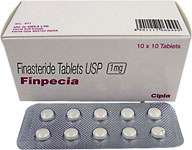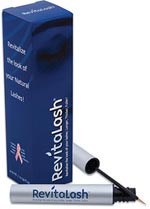 I just got back from the 17th annual scientific ISHRS meeting (basically a hair transplant doctor’s convention), which went on from July 22-26. Lots of information was presented… lots of lectures, presentations, and discussions. This year’s meeting was in Amsterdam, so I had quite a long flight back to California when it was all over and I was able to do a write up on the plane of what I learned. I thought I’d share…
I just got back from the 17th annual scientific ISHRS meeting (basically a hair transplant doctor’s convention), which went on from July 22-26. Lots of information was presented… lots of lectures, presentations, and discussions. This year’s meeting was in Amsterdam, so I had quite a long flight back to California when it was all over and I was able to do a write up on the plane of what I learned. I thought I’d share…
Treatments
Dutasteride:
Review of the Korean study for this drug indicates that it is safe and effective drug with side effects consistent but slightly higher than those in the finasteride study. The tests, however, did not study the impact of this drug on sperm count. One doctor present at the meeting reported two patients who had become sterile while on the drug (one being his son). Both men, upon stopping the drug, found their sperm count returned to normal. The failure to study sperm count is, in my opinion, a major oversight in the Korean study from a safety point of view. Based upon this private report, I will not prescribe dutasteride without at least 2 years of treatment on finasteride or a frank failure of the finasteride. I will require that anyone getting a prescription from me (each case would be individualized) would have to sign a legal document that states they recognize that sterility is a possible side effect and risk of the drug.
Finasteride:
Finasteride limits Type 2 receptors for 5 alpha reductase, which reduces the incidence of cancer of the prostate… not the risk of developing prostate cancer. The information available only covers a 7 year period and longer term studies are not available. It is unknown if this drug will reduce the risk of prostate cancer.
PRP:
The use of platelet rich plasma (PRP) was a theme for many scientific papers. We have known that for topical use on skin wounds, this PRP has shown value in accelerating healing when applied. Studies for its application for alopecia areata was suggested by one doctor and a few doctors have started to soak the grafts in the plasma of patients to see if the grafts grew sooner, looked more robust and had a high “take” rate. I would not trust the conclusions of these doctors without a good scientific study to back up their observations. For the moment, I would call this “human experimentation”.
Prostaglandin:
Dr. Bessam Farjo presented a paper on prostaglandin receptors in the stimulus of hair growth. The drug latanoprost has been successfully used to grow eyelashes and is now FDA approved for this (in the form of bimatoprost), but the actual mechanism for what has been observed is unknown. It clearly increases the hair length, rate of hair growth and pigment in the treated lash, and there is a suggestion that there may be applications of this drug in the treatment of hair loss with a bit more research. Some early research by Dr. Farjo suggests that this may very well work as a stimulant for hair growth and in future treatments for hair loss.
Read more

 I know very little about Merck’s patent for topical finasteride, although they did file 2 patents (one in 1993 and the other in 1995) in the general area of finasteride use on skin. Johnson and Johnson holds at least two patents for topical finasteride, so it does appear that this is a hot field and what differentiates one process from the other is something that I do not have the time to review. Does anyone with a bunch of time and interest care to go through these and create an itemized list?
I know very little about Merck’s patent for topical finasteride, although they did file 2 patents (one in 1993 and the other in 1995) in the general area of finasteride use on skin. Johnson and Johnson holds at least two patents for topical finasteride, so it does appear that this is a hot field and what differentiates one process from the other is something that I do not have the time to review. Does anyone with a bunch of time and interest care to go through these and create an itemized list? Proscar is the same drug as Propecia, just in higher dosage (Proscar is 5mg finasteride, Propecia is 1mg). If you cut the medication, it is the same. You do need a different prescription for that, and some doctors may have a problem giving you a prostate medication prescription at 24 years old. Explain to them that you know to cut the medication into 4 pieces. If one doctor won’t give you a prescription, you can try another one.
Proscar is the same drug as Propecia, just in higher dosage (Proscar is 5mg finasteride, Propecia is 1mg). If you cut the medication, it is the same. You do need a different prescription for that, and some doctors may have a problem giving you a prostate medication prescription at 24 years old. Explain to them that you know to cut the medication into 4 pieces. If one doctor won’t give you a prescription, you can try another one. This post gets two responses…
This post gets two responses… Many drugs are manufactured overseas by good companies which subscribe to FDA quality manufacturing rules.
Many drugs are manufactured overseas by good companies which subscribe to FDA quality manufacturing rules.  I just got back from the 17th annual scientific
I just got back from the 17th annual scientific